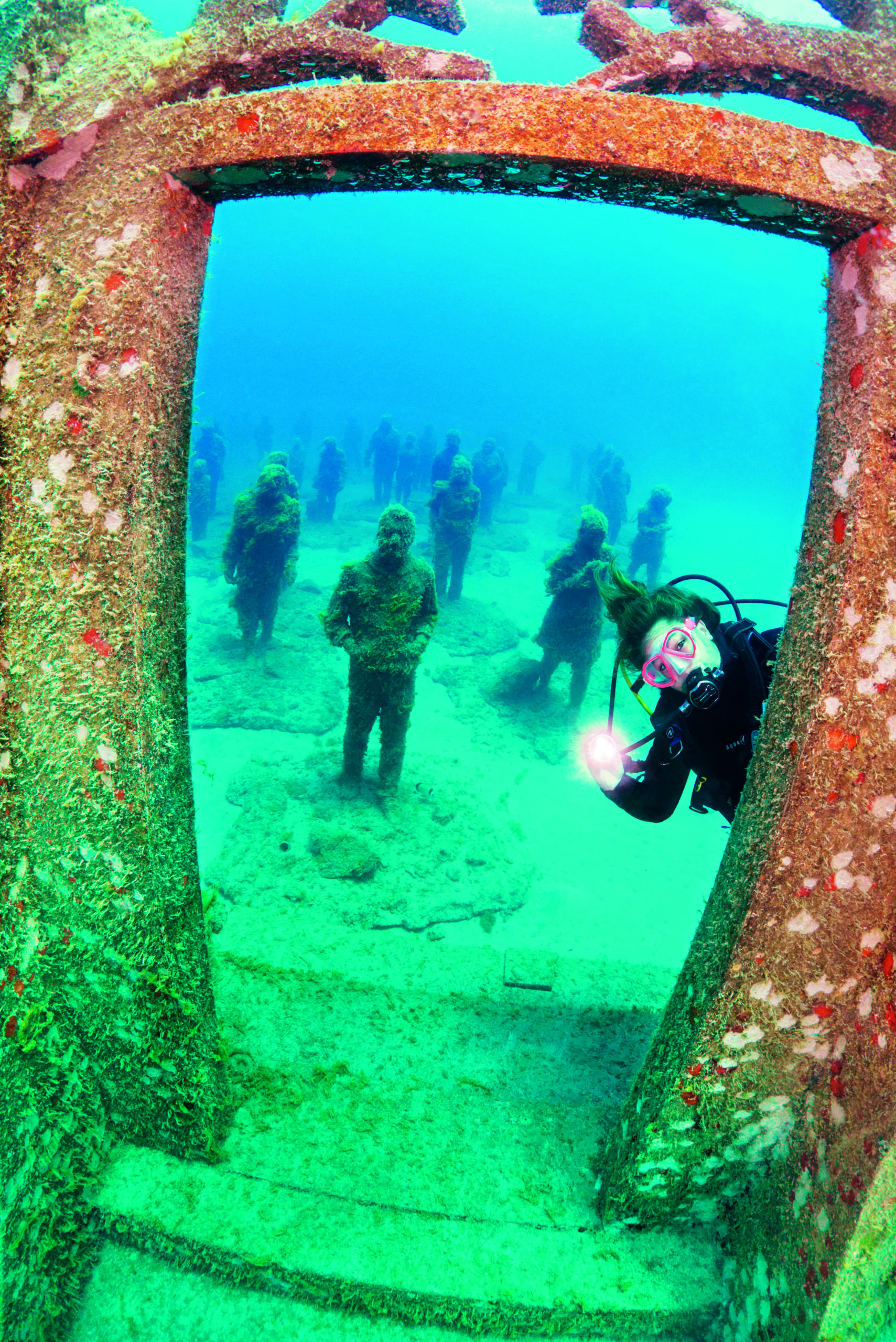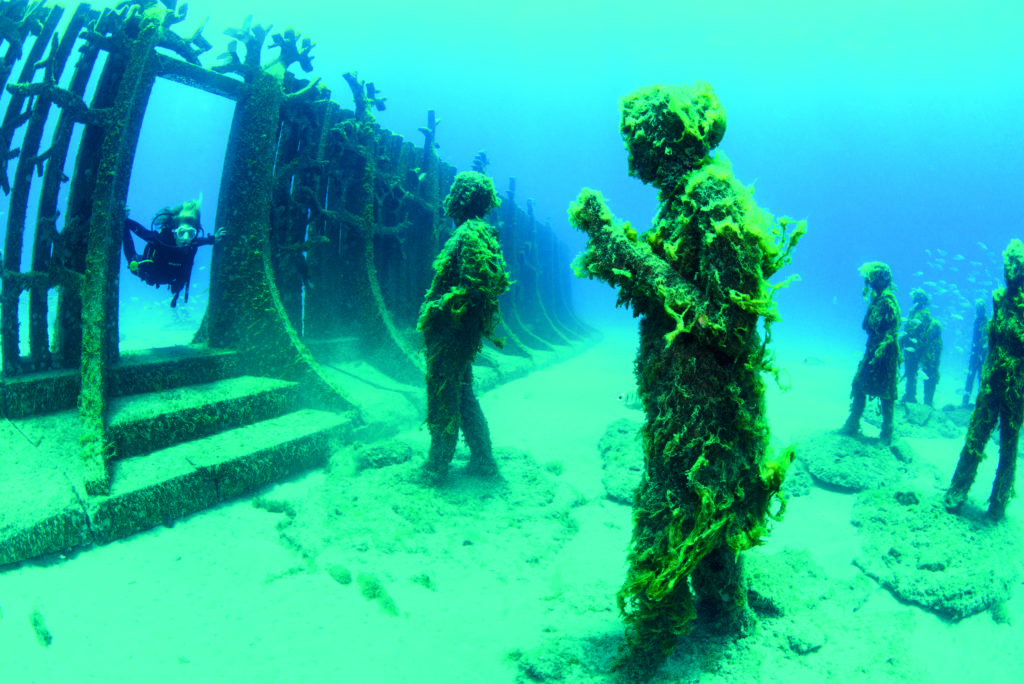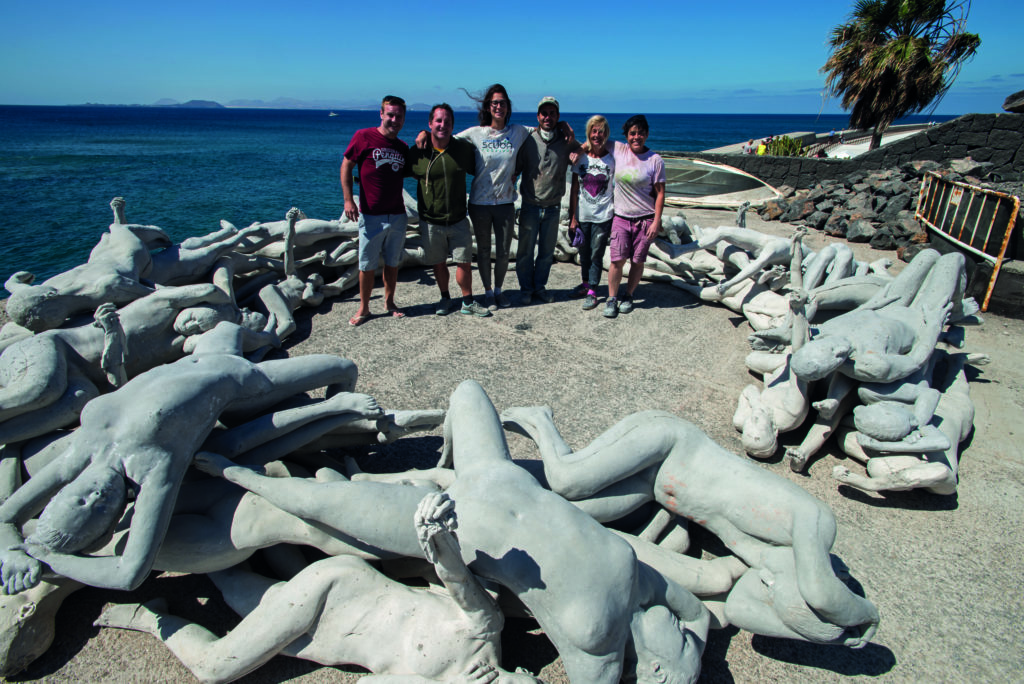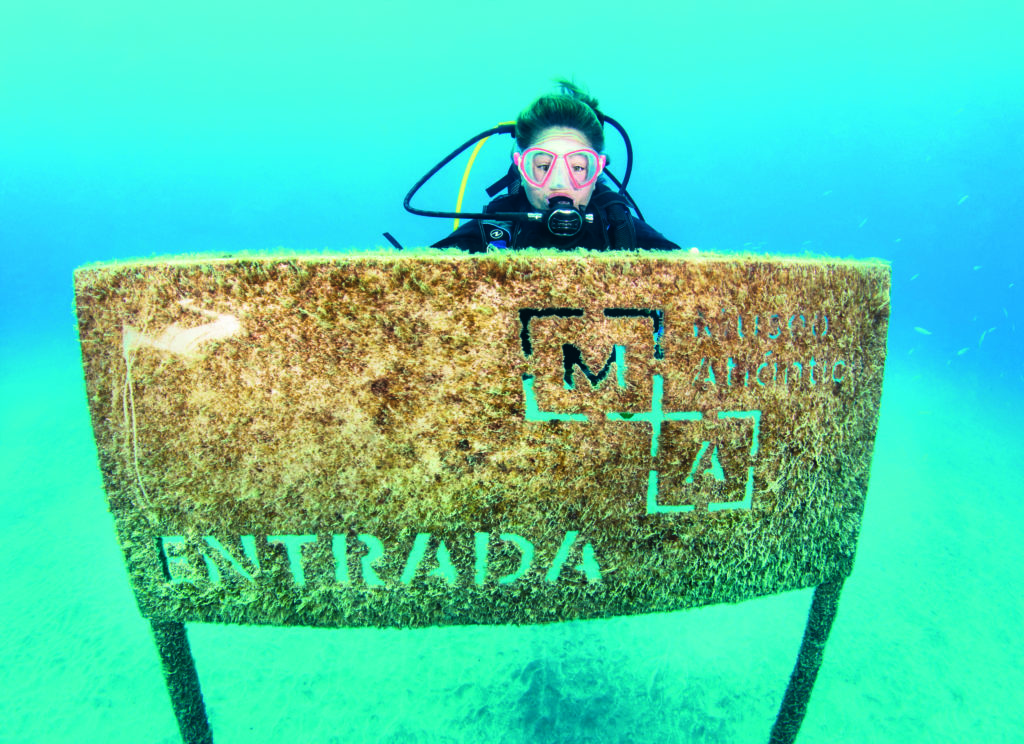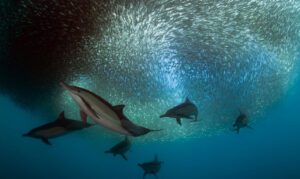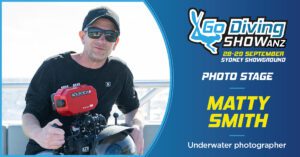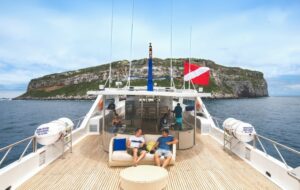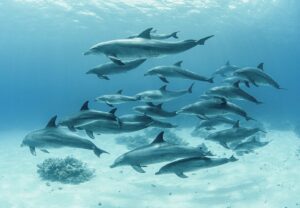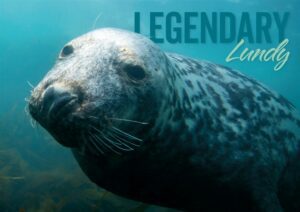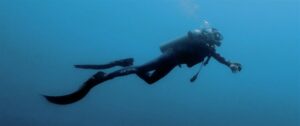Stuart Philpott returns to Lanzarote to further explore the Museo Atlantico underwater sculpture park, which has now been extended by a phase two installation.
Spring 2017 saw the completion of Museo Atlantico, located at Playa Blanca in Lanzarote. Europe’s first-ever underwater sculpture park – designed, built and installed by Jason deCaires Taylor – offers scuba divers a unique experience.
In all, there are 12 installations with more than 300 individual pieces covering half the area of a full-sized football pitch. Each thought-provoking installation has an underlying theme. Some portray happier times while others describe more-distressing scenes.
Jason said: “The museum allows us to briefly step back from our own lives and look at our own selves in a different context”.
The 700,000 euro underwater ‘museum’ project was commissioned in two phases over a 12-month period. Jason said: “It’s called a museum because that’s where we put items that are precious, worth conserving and appreciating”. I managed to visit phase one just a few months after its inauguration at the beginning of 2016. I noticed there was already a layer of algae obscuring some of the fine detail work, but this was all part of the overall plan. The sculptures are supposed to be absorbed by the sea and turned into a living coral reef. Jason said: “We are basically creating a new ecosystem”.
The position and management of the museum had been well planned. Jason chose Costa de Papagayo as it has no significant underwater features. The dive site lies about 400 metres from the beach, so is not easily accessible as a shore dive, and at a maximum depth of 15m is probably too deep for most recreational snorkellers.
Museo Atlantic is open for business from 10am until 4pm every day. There is a 12 euro admission fee on top of the normal dive cost (eight euro for freedivers). This is paid to the dive centre and then a token handed over to the park rangers moored up on site.
Only certified underwater guides can take divers on a museum tour. There is a pre-determined route to follow, descending at one particular marker buoy and ascending at another. Maximum allowable dive time is one hour. I made arrangements for two dives at the museum on two separate days. Manta Dive Centre is based at Puerto del Carmen, one of the most-popular diving areas on the island.
Joint owner Rachel Parry had agreed to double up as my guide and model for the dive. Rachel explained that it was far more comfortable and cost effective for us to jump in an air-con minibus and drive 40 minutes up the coast to Playa Blanca rather than complete the entire journey by sea.
We parked at Rubicon Marina, got kitted up and then ambled down to the jetty. Rachel had already phoned ahead and prebooked us two spaces on one of the local dive centre’s RIBs. The journey from the marina to the dive site took no more than five minutes.
The tour started at a sign post introducing the museum and then progressed on to some of the more-established phase one installations that I had seen in 2016. Los Jolateros portrayed five boys sitting in small handmade boats competing at a local regatta. Their little one-seater boats known as ‘Jolateros’ were made from rusty old oil drums.
I could imagine the boys paddling like crazy with crowds of people cheering them on. The five sculpture boats had been placed on the seabed in rough formation. Apart from a few bream circling the lead boat, nothing much had changed over the past year.
I followed Rachel over to The Raft of Lampedusa, which told the tragic story of 13 refugees escaping from war-torn Libya. I could see the algae growth had flourished. Some of the faces were entirely obscured and the whole installation had turned a distinct tinge of green.
We moved on to a new piece called Immortal, which displayed the body of a local fisherman from the island of Graciosa (north coast of Lanzarote) lying on a traditional funeral pyre. I watched an octopus shimmy across the stack of wood made from Jason’s special biodegradable cement mix and disappear from view.
The site had definitely encouraged more marine life habitation to an otherwise barren sand and shingle seabed. Crossing the Rubicon is the biggest and most-impressive installation of them all. Phase one included a group of 35 life-size human casts all walking in the same direction like a plague of zombies.
Each individual cast had been taken from a real-life person. My favourites included a girl looking at her mobile phone, another reading a book and others in bikini tops.
The lead man looked pretty cool strolling along with his hands in his pockets. Jason said: “This was just some French tourist who offered to pose for me”. The algae had grown into long strips which reminded me of old flaky bandages. Maybe the zombies were transforming into mummies? Phase two introduced a huge imposing four-metre-high wall.
This had been erected in front of the 35, with the lead man standing just a few metres away from a rectangular doorway, which represented a portal to the Atlantic Ocean.
A huge shoal of 1,000 or more bastard grunts congregated on the other side of the doorway. They were all swirling around a sculpture of a photographer taking pictures, which seemed quite apt. This installation is called Photo Op and displays not one but two photographers taking everyday snaps.
When I visited Jason’s studio in 2016, he was building a new piece which included hundreds of people lying on top of each other forming a giant circle. This is now the last installation of the tour and is called The Human Gyre. I tried to get an overhead shot of Rachel hovering inside the structure, but the sheer density of glassfish totally obscured all the detail.
We quickly used up our full hour of underwater time and I still hadn’t finished taking pictures. Rachel seemed to have enjoyed the experience and was more than happy to pose by the impressive sculptures.
Manta Diving normally offer trips to the museum every Tuesday and Thursday. Rachel said that some of the dive centres offer the museum dive as a Discover Scuba experience, meaning participants complete a confined water session at Playa Chica in the morning and then drive up and dive on the museum in the afternoon.
In my mind, fragile sculptures and newbie divers didn’t sound like a good idea, but I wasn’t making the rules!
My second ‘contingency’ dive would be used to mop up all of the installations I missed the first time around. I was paired off with newly qualified French instructor Zsa Zsa, who looked as impressive as her name, who would be acting as guide and model this time.
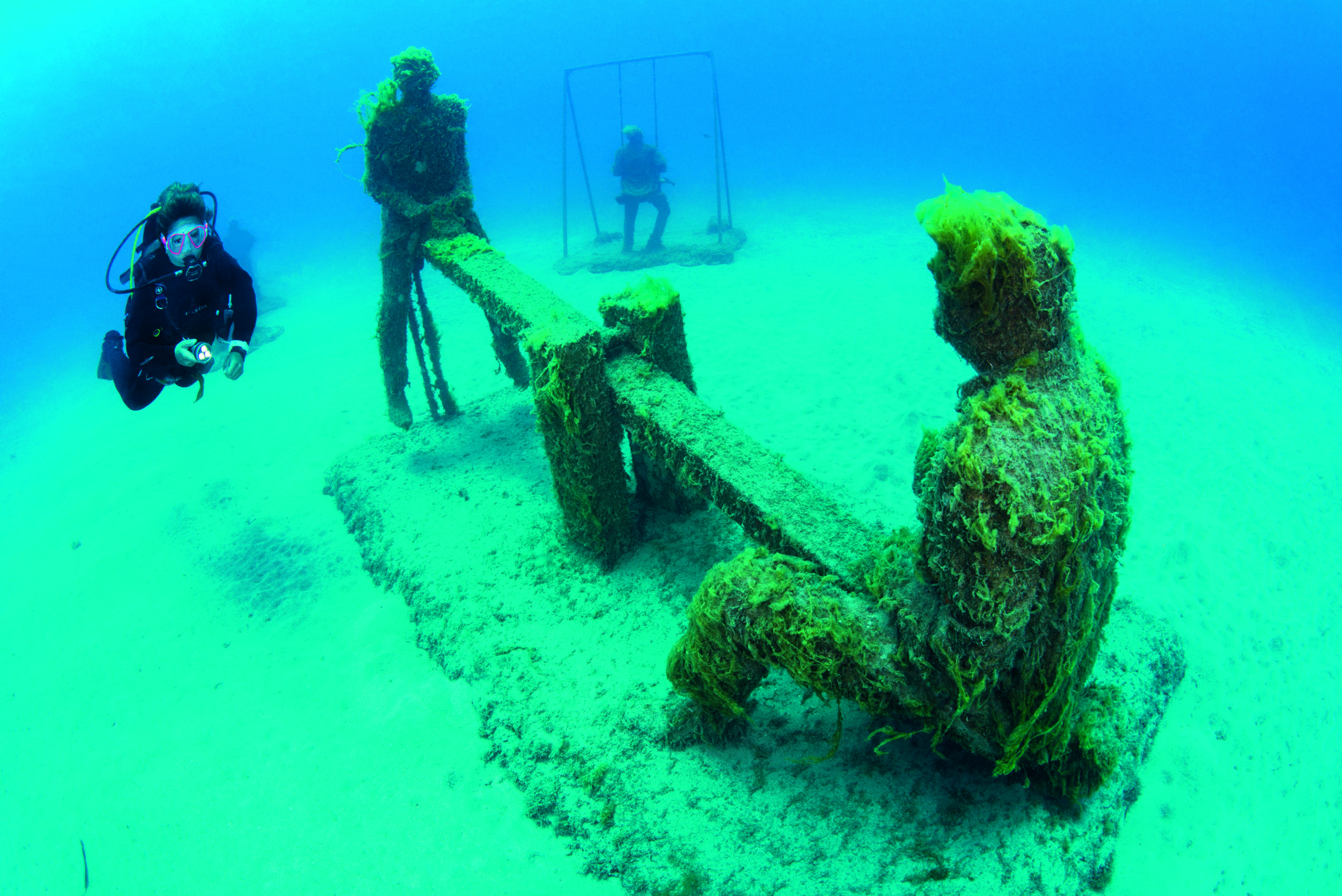
On previous visits I had noticed that the visibility could vary depending on how many divers are kicking up the seabed, and local tidal conditions also made a difference. This time around I was in luck for we had picked a late-afternoon slot with only two other divers on the boat and the underwater visibility turned out to be a stonking 25-30 metres.
For the first time ever, I could clearly see some of the other installations way off in the distance. We skipped past the first few sculptures and headed straight for the Rubicon walk and wall. I had worked out some ideas for pictures, which included Zsa Zsa looking through the doorway at the group of people which, for some reason, reminded me of a scene from Lewis Caroll’s novel Alice through the Looking Glass.
The visibility really helped me show some scale and perspective. In hindsight, I wish I had panned out slightly and positioned myself slightly lower to the seabed, but the moment had come and gone. I passed through the doorway and swam towards a piece called The Portal, which is a giant square mirror placed on a cactus-shaped structure with a strange-looking horned creature peering in.
The mirror is supposed to reflect the surface of the ocean and the base has been designed with nooks and crannies to attract octopus, sea urchins and other bottom-dwelling species.
The shiny mirror often gets covered by a layer of algae, so a broom has been added to brush the surface clean. I wanted to get a shot of Zsa Zsa looking into the mirror, but the mirrors surface wasn’t as reflective as I had hoped. After much umming and ahhing, I made do with her hovering slightly above.
The playground sculptures were all part of the phase two build. Unregulated shows two businessmen wearing suits sitting on a seesaw. This is supposed to signify that they are alien to the natural world.
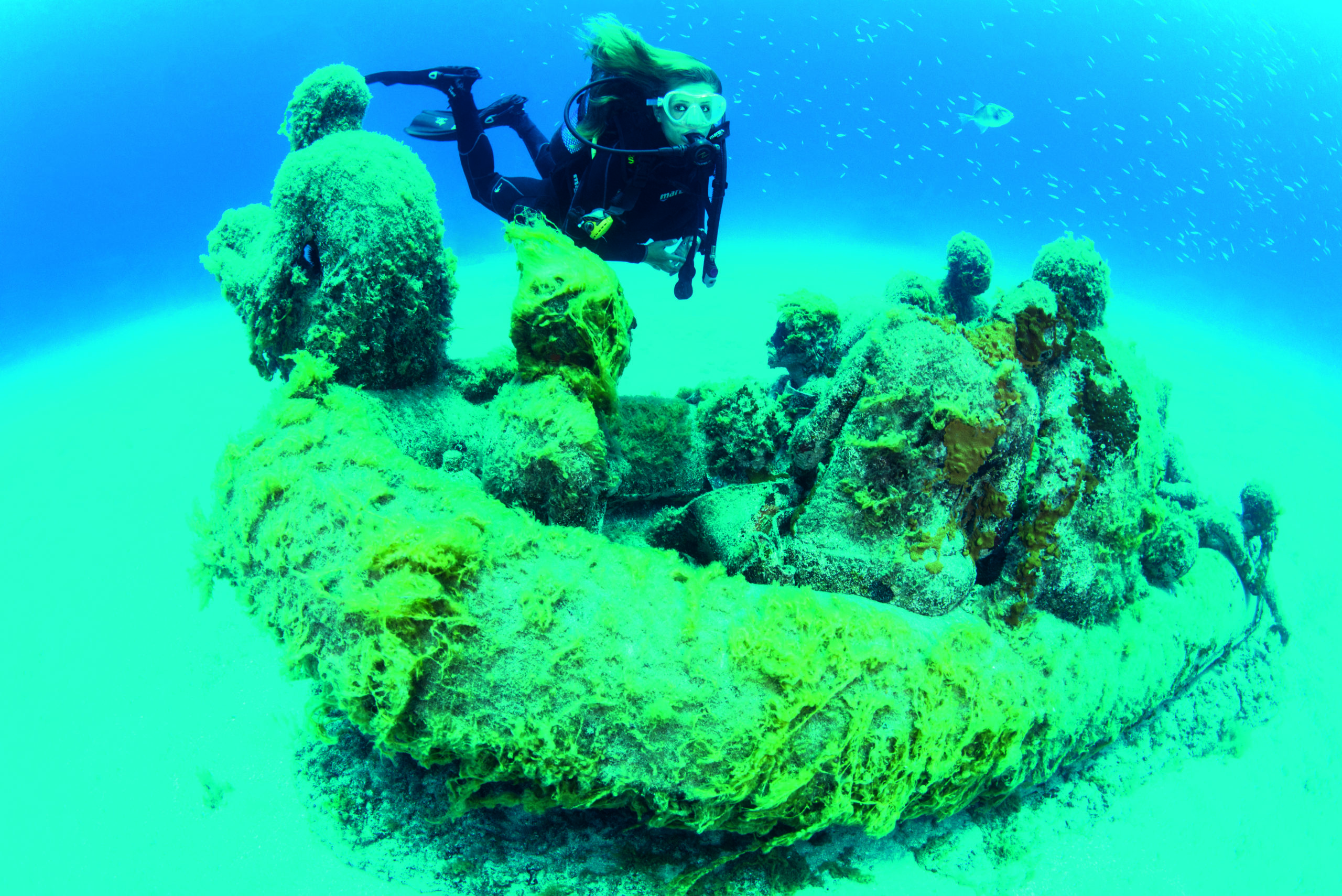
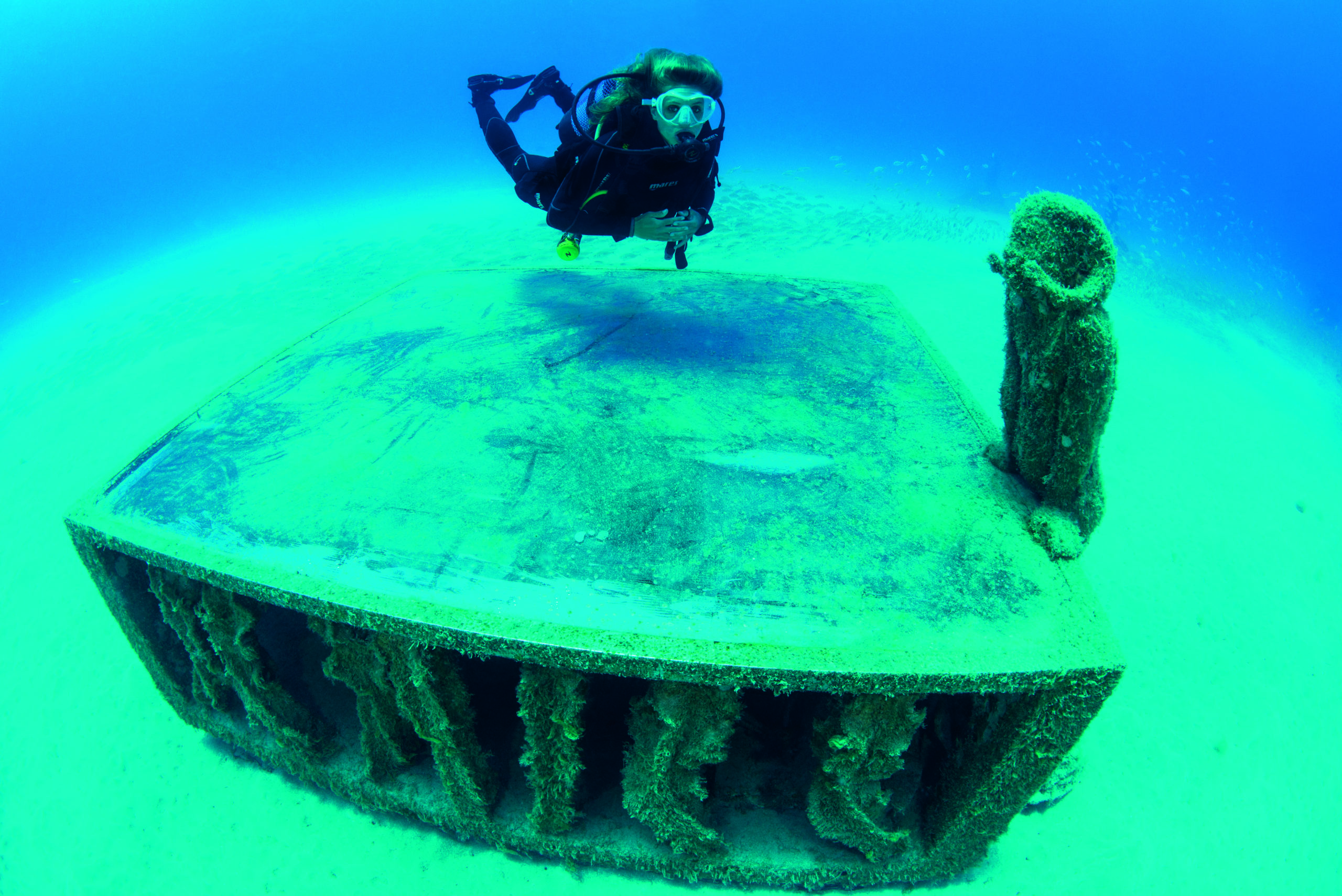
My personal favourite was a guy sitting on the swing, although the square framework looked slightly curved using a fisheye 16mm lens. One of the new sculptures even had an uncanny resemblance to Donald Trump. I’m not sure whether the infamous president had posed for Jason? It was quite disturbing to see his distinctive ‘hairstyle’ underwater! A number of long, stringy kelp-like plants heading off towards the surface had been added to the botanical garden section. This reminded me of Jack and the beanstalk. At first I missed the human sculpture buried on the seabed.
As an underwater photographer I couldn’t get enough of Museum Atlantico. It’s an ideal training ground with plenty of non-moving subjects to practice on. Or just forget about the sculptures and focus on the ever-increasing marine life inhabitants.
I’ve probably dived at the site ten times now over the course of a year and it’s constantly developing, the once-barren bay has been brought back to life with grunts, scorpionfish, glassfish shoals, octopus, barracuda and even the odd passing angel shark.
It’s a shame that some of the sculptures’ fine detail work has been obscured by algae growth, but this is all supposed to be part of the evolution process. I think the site is best described as part reef dive and part wreck dive, with some thought-provoking material thrown in for good measure.
It really is a must for every diver visiting Lanzarote, just for the novelty factor alone!
Phase one included a group of 35 life-size human casts all walking in the same direction like a plague of zombies
This time around I was in luck for we had picked a late-afternoon slot with only two other divers on the boat and the underwater visibility turned out to be a stonking 25-30 metres
Photographs by Stuart Philpott

